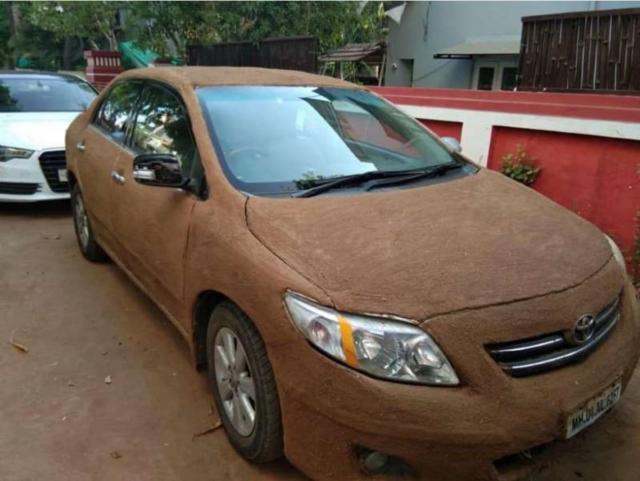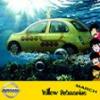Search the Community
Showing results for tags 'india'.
-
suchow again? https://www.theonlinecitizen.com/2019/08/14/modis-govt-withdraws-request-to-world-bank-to-support-temasek-led-amaravati-capital-project/ According to a Reuters’ report last month (Jul 2019), the World Bank announced that it had withdrawn US$300 million of funding for the new capital in Andhra Pradesh, after the Indian central government dropped support for the project. In a statement, World Bank said, “On July 15 the Government of India (GoI) withdrew its request to the World Bank for financing the proposed Amaravati Sustainable Infrastructure and Institutional Development Project. The World Bank’s Board of Executive Directors has been informed that the proposed project is no longer under preparation following the government’s decision.” The World Bank website had also showed the status of Amaravati Project as “dropped”. The total project cost was US$715 million and the state government in 2016 had sought funding from the World Bank. However, it had committed US$300 million. But now, even this US$300 million has been withdrawn, thanks to the request from Modi’s central government. “For a change, good sense has prevailed upon the bank to withdraw from the disastrous programme,” Sreedhar R., the director of the Environics Trust, one of the activist groups that has been critical of the project, said in a statement. The project is a joint development between the Singapore Consortium led by Temasek-linked Ascendas-Singbridge and Sembcorp Development, and Amaravati Development Corporation Limited, a company set up by the former Naidu’s state government. Indian PM Modi laid the foundation stone for the project in 2015. http://projects.worldbank.org/P159808?lang=en Amaravati Sustainable Infrastructure and Institutional Development Project OVERVIEW DETAILS FINANCIALS PROCUREMENT RATINGS RESULTS MAP DOCUMENTS NEWS & MEDIA PROJECT AT-A-GLANCE Project ID P159808 Country India Region South Asia Status Dropped Approval Date (as of board presentation) N/A Closing Date N/A Total Project Cost** US$ 715.00 million Commitment Amount US$ 300.00 million Team Leader Raghu Kesavan, Jon Kher Kaw View More » LATEST PROJECT DOCUMENTS Project Information Document-Integrated Safeguards Data Sheet - Amaravati Sustainable Infrastructure and Institutional Development Project - P159808 (English) January 21, 2019 India - Amaravati Sustainable Capital City Development Project : Environmental and Social Assessment - Executive Summary (English) August 1, 2018 India - Amaravati Sustainable Capital City Development Project : Environmental Assessment (Vol. 2) : Environmental Impact Assessment : Environment Management Plan Report for Flood Mitigation Works (English) August 1, 2018 View All Documents » * The project abstract is drawn from the PAD, SAR or PGD and may not accurately reflect the project's current nature ** Total project cost includes funding from World Bank and non-bank sources in US$ millions. Active and Closed projects show commitment at Board approval. It does not reflect any cancellations. Proposed (pipeline) and dropped projects show the forecast amount. The commitment amount for projects in the pipeline is indicative and may be modified during the project preparation.
-
Evoque R-Dynamic "First Edition" Evoque D240 HSE Evoque D240 HSE R-Dynamic Black Pack Having pioneered the luxury compact SUV market, now with more than 217 international awards, the new Range Rover Evoque, available in 127 countries, is a sophisticated evolution of the original. Combining unrivalled Range Rover heritage with cutting-edge technology - designed, engineered and manufactured in Britain - it meets the needs of today's customers. Building on the original's instantly-recognisable design, the new Range Rover Evoque is a sophisticated evolution of the distinctive coupé-like silhouette, typified by its distinctive fast roofline and rising waist that identify the Range Rover family. The outstanding volume and proportions are amplified by its pronounced shoulders and powerful wheelarches that, alongside 21-inch wheels, combine to create a strong and dynamic attitude. The introduction of jewel-like elements such as super-slim Matrix LED headlamps provide a more sophisticated front and rear lamp graphic. Flush door handles add to the smooth, sculpted aesthetic, while sweeping directional indicators create a purposeful signature. Optional R-Dynamic details and burnished copper accents add to the unique appeal. Inside, the finely crafted design integrates uncluttered surfaces and simple lines with carefully curated premium materials to create a luxurious, minimalist, digital cabin. Technical textiles that use recycled plastics are offered as premium alternatives to leather, such as a Kvadrat wool blend and Dinamica® suedecloth, as well as Eucalyptus and Ultrafabrics™ options. The cabin is designed to be a calm and serene space, ensuring comfortable, healthy and happy occupants, with technologies such as the twin touchscreen Touch Pro Duo system, featuring new, faster software, 16-way seat controls and cabin air ionisation that complement the increased interior space. The compact footprint is almost identical at 4.37m, yet built on Land Rover's new Premium Transverse Architecture, there is more interior space than before. A longer wheelbase yields 20mm extra rear kneeroom and an increase in small item stowage - the larger glove box and centre cubby can now fit tablets, handbags and bottles with ease. The luggage space is 10 per cent larger (591 litres) as well as much wider and easily fits a folded pram or set of golf clubs, with space increasing to 1,383 litres when the flexible 40:20:40 second-row seats are folded. The new architecture has been developed for electrification, with a 48-volt mild-hybrid available at launch and a plug-in hybrid model offered around 12 months afterwards. The mild hybrid powertrain is a first for Land Rover and works by harvesting energy normally lost during deceleration thanks to the engine-mounted belt-integrated starter generator, storing it in the under-floor battery. At speeds below 17km/h (11mph), the engine will shut off while the driver applies the brakes. When pulling away, the stored energy is redeployed to assist the engine under acceleration and reduce fuel consumption. The result is a refined, quiet and efficient drive in built-up traffic heavy areas, in addition to efficiency savings. The lowest emitting CO2 derivative is the 143g/km front wheel drive, manual transmission with 150PS Ingenium diesel engine. The most popular all wheel drive, automatic transmission vehicles, come with a choice of four-cylinder Ingenium petrol and diesel engines. This is where the 48-volt mild-hybrid system is used to reduce CO2 emissions to as lows as 149g/km and fuel economy from 50.4mpg (5.6l/100km) (based on NEDC Equivalent test procedure). An even more efficient plug-in hybrid electric vehicle (PHEV) and three-cylinder petrol Ingenium engine will also join the range. Every bit a Range Rover, the compact SUV combines all-terrain capability with all-weather assurance. New Evoque features All-Wheel Drive, as well as a second-generation Active Driveline with Driveline Disconnect to enhance efficiency and Adaptive Dynamics to deliver the optimum balance of comfort and agility. Terrain Response 2 - technology first found on full-size Range Rover - automatically detects the surface being driven on a adjusts the set-up accordingly, while Evoque can now wade through water up to 600mm (previously 500mm). Combining all-terrain capability with on-road composure, the Evoque's new MacPherson Hydrobush front and Integral Link rear suspension and Adaptive Dynamics technology deliver not only improved refinement and stability in all conditions, but enables the agile handling that makes Evoque ideal for the tight city streets of many countries around the world. The famed Range Rover command driving position has jumped into the digital age, with a segment-first 'ClearSight rear-view mirror' that transforms into an HD video screen. If rear visibility is compromised by passengers or bulky items, the driver simply flicks a switch on the underside of the mirror and a camera feed from the top of the car displays what is behind the vehicle in crisp high definition. The screen provides a wider (50-degree) field of vision and superior visibility in low light. The new Range Rover Evoque is also the first in the world to feature Ground View technology, which effectively makes the bonnet invisible by projecting camera imagery onto the upper touchscreen to show the driver a 180-degree view under the front of the vehicle. This is useful when negotiating difficult parking spaces, navigating high city centre kerbs or tackling rough terrain and is the realisation of the Transparent Bonnet technology previewed by Land Rover in 2014. There is a reversing camera as standard on all models, alongside a suite of advanced driver assistance systems. This includes Adaptive Cruise Control with Steering Assist, which centres the vehicle in the lane based on road markings as well as maintaining a safe distance from the vehicle in front. Active safety features such as Lane Keep Assist, Autonomous Emergency Braking and Driver Condition Monitor are all available to keep occupants safe. Evoque is the first Land Rover with Smart Settings, which uses artificial intelligence algorithms to learn the driver's preference and acts as an onboard butler. In addition to seat position, music and climate settings, Evoque can also control steering column preferences to maximise comfort. SUSTAINABILITY Jaguar Land Rover has focused on reducing the environmental impact of vehicles and operations. This has included reducing the CO2 it takes to build each car by 46% versus 2007 levels and the purchase of zero carbon electricity for all UK operations. As a result, Jaguar Land Rover has now worked with the Carbon Trust to certify as Carbon Neutral, the UK manufacturing and production development sites, from April 2017 to March 2018. This includes the manufacture and development of the new Range Rover Evoque. Built on Land Rover's new mixed-metal Premium Transverse Architecture, Evoque fuses efficient Ingenium diesel or petrol powertrains, hybrid-electric power and sumptuous, sustainable materials. Up to 33kg of natural and recycled material is used in each Evoque to minimise environmental impact. The recycled materials are taken from a mixture of post-consumer or post-industrial sources within the supply chain. Land Rover's drive for sustainability is further reflected in its move towards a wider choice of responsibly-sourced interior materials that retain the Range Rover Evoque's trademark luxurious feel. Featuring ground-breaking textiles and trim finishes, two new seat options are on offer. Customers can choose seats upholstered in a premium alternative to leather developed by Danish textile experts, Kvadrat - a high-quality material that combines a durable wool blend paired with a technical Dinamica® suedecloth, made from 53 recycled plastic bottles per vehicle. In addition, customers will have the option of a new Eucalyptus textile produced from natural fibres that when grown, uses significantly less water than traditional materials and features alongside a new lightweight performance material not derived from animals. Each option has a sumptuous feel and unique design, offering a truly premium alternative to leather. The new Evoque will be available from launch with a 48-volt mild-hybrid electric vehicle powertrain that harvests energy normally lost during deceleration and stores it in the underfloor battery. At speeds below 17km/h (11mph), while under braking, the engine will shut off to minimise emissions. This technology combines to reduce fuel consumption and tailpipe emissions, now as low as 50.4mpg (5.6l/100km) and CO2 emissions of 149g/km (NEDC Equivalent). When the driver accelerates, the stored energy is redeployed to assist the engine under acceleration, reducing fuel consumption and making the new Evoque an ideal SUV for driving in congested, stop-start city traffic. This mild hybrid powertrain will be joined by a plug-in hybrid electric vehicle model in 2019. Customers can also choose between six Ingenium four-cylinder powertrains, with three petrol and diesel variants, respectively. The most efficient of these is the 150PS diesel (FWD) with emissions of 143g/km (NEDC Equivalent) and 5.4l/100km (52.3mpg) while, at the other end of the performance scale, there is a 300PS AWD petrol model with 400Nm of torque, emissions of 186g/km (NEDC Equivalent) and 8.1l/100km (34.4mpg). CAPABILITY The Range Rover Evoque is based on Land Rover's new mixed-metal Premium Transverse Architecture, which has been designed for hybrid-electric power - 48-volt mild hybrid, 3-cylinder Plug-in Hybrid - and three- and four-cylinder Ingenium petrol and diesel engines. The new body is 13% stiffer than its predecessor, which together with rigidly-mounted subframes reduces noise and vibration intrusion into the cabin. With a 21mm longer wheelbase and compact new suspension design, the compact SUV delivers increased interior room and improved handling in all conditions. The Ingenium engines have been advanced with new technologies to make them quieter and more refined, while the ZF nine-speed automatic gearbox has been recalibrated to ensure a smoother, more progressive drive on all-terrains. Integral Link rear suspension separates lateral and longitudinal forces to enhance body control and agility, providing greater comfort and confidence on the road. At the front, MacPherson strut Hydrobush front suspension features fluid-filled bushes to minimise the high-speed wheel vibration felt through the steering wheel. Adaptive Dynamics combines intelligent sensors and continuously variable suspension dampers that monitor road conditions every 100 milliseconds. The system constantly adjusts the dampers to give a composed ride with maximum control, regardless of any change of terrain or surface. Active Driveline is introduced on new Evoque, which is an electronic torque vectoring system that constantly balances the distribution of engine torque across both front and rear axles when cornering to improve grip and steering confidence. Driveline Disconnect fully disengages drive to the rear wheels when cruising to reduce frictional losses and improve fuel economy, before seamlessly re-engaging in a fraction of a second when conditions dictate to ensure no loss in traction. The new Evoque raises the bar for all-terrain capability in the compact luxury SUV sector, with a unique blend of inherent off-road ability and enhanced technology to provide traction on all surfaces and in every condition. Ground clearance is 212mm, while approach and departure angles are 25 degrees in the front and 30.6 degrees in the rear. Terrain Response 2 is available as standard for the first time on new Evoque with All-Wheel Drive and automatic transmission. Not only will this allow drivers to choose from four modes (Comfort, Sand, Grass-Gravel-Snow, and Mud & Ruts) to optimise performance and capability, but the new Auto mode enables Evoque to select the most appropriate mode for the conditions and automatically adjust its torque delivery to suit the terrain. Evoque's maximum wading depth of 600mm can be effectively monitored with optional Wade Sensing. Ultrasonic sensors in the exterior mirrors accurately measure the depth of the water, which is displayed on the central touchscreen. The latest Evoque will come with a variety of all-terrain technologies such as Hill Descent Control, Gradient Release Control and All-Terrain Progress Control. Allied with features such as the world-first ClearSight Ground View (a realisation of Land Rover's transparent bonnet concept), which grants greater visibility beneath the vehicle when tackling uneven terrain, the latest Range Rover Evoque has all the credentials to go above and beyond. There is a reversing camera as standard on all models, alongside a suite of advanced driver assistance systems. This includes Adaptive Cruise Control with Steering Assist, which centres the vehicle in the lane based on road markings as well as maintaining a safe distance from the vehicle in front. Active safety features such as Lane Keep Assist, Autonomous Emergency Braking and Driver Condition Monitor are all available to keep occupants safe. TECHNOLOGY ClearSight Ground View - the realisation of Land Rover's transparent bonnet concept previewed on the Discovery Vision concept - is a world first. Cameras in the front grille and on the door mirrors project a feed onto the central touchscreen to show what is ahead of and underneath the front of the vehicle with a virtual 180-degree view. Helping the driver maintain visibility when negotiating extreme terrains as well as high city-centre kerbs, this is yet another technological evolution that makes the new Evoque ideal for traversing the urban jungle, the actual jungle and everything in between. The new smart rear-view mirror transforms into an HD video screen at the touch of a button. By displaying a rear-facing camera feed onto the mirror, the driver's view remains unrestricted by passengers or large items in the back, while also providing a wider 50-degree field of vision using a camera positioned above the rear window. This technology also delivers clearer visibility in low light conditions. Designed with a protective lip to prevent mud and water soiling the lens, there is also a hydrophobic coating that repels water spray. In the unlikely occurrence that the camera is ever obscured, drivers can change back to a traditional rear view mirror at the flick of a switch. Land Rover's Touch Pro Duo infotainment system is central to the digital interior experience, combining two sleek 10-inch high-definition glass touchscreens, a 12.3-inch driver display behind the steering wheel and full-colour head-up display. The result is a beautiful, 'hidden until lit' interior filled with state-of-the-art digital interfaces. The ergonomic design and capacitive switches are easier and more intuitive to operate, allowing the driver to easily control a wide variety of technologies. There is smartphone integration with Apple CarPlay and Android Auto, as well as Click & Go rear-seat tablet holders with charging capability, 4G WiFi hotspot (for up to eight devices) and six USB slots located throughout the cabin. The new Evoque is the first Land Rover with Smart Settings technology, which uses advanced artificial intelligence algorithms to learn the driver's habits over time. The 'self-learning' technology recognises the driver from their key fob and phone and will set up their seat and steering column position on approach, allowing for up to eight profiles to be registered. After a few journeys, Evoque remembers the driver's preferred temperature settings, media preferences and commonly dialed numbers depending on the time or day of the week. The InControl Remote smartphone application allows customers to stay in touch with their Evoque, no matter where in the world they are. Customers can use their phone to find their vehicle or check the remaining fuel range, lock and unlock the vehicle remotely, as well as pre-heat or cool the cabin to the desired temperature. Evoque is future-proofed, with wireless software updates to the infotainment and vehicle systems which means the compact luxury SUV continuously improves over time, without having to visit a retailer. To ensure the wellbeing of occupants, Evoque is fitted with Cabin Air Ionisation technology that removes impurities from the environment. When paired with Air Quality and pollen filters, plus a more peaceful cabin thanks to reduced road noise levels, Land Rover engineers have ensured a more relaxing and refreshing experience on any journey.
- 2 replies
-
- 5
-

-
- land rover
- range rover
- (and 8 more)
-
Woman Poisons Dozens at Housewarming Party Trying to Kill Family Who Made Fun of Her Cooking A 23-year-old woman from Khalapur, India, is risking the death penalty for poisoning the food at a relative’s housewarming party in an attempt to kill attendees who made fun of her dark completion and cooking skills. Police in Khalapur claim that 23-year-old Pradnya Survase confessed to mixing snake poison into the dal served to some of the guests at a feast hosted by one of her relatives. She was trying to kill her husband and some of her in-laws, who she says had been mocking her dark skin and cooking skills for years. Unfortunately, poison doesn’t discriminate, and her assassination attempt put 88 people in the hospital, five of whom eventually lost their lives. “Pradnya claims that since her marriage two years ago, she has been insulted regularly for her dark complexion and accused of not being able to cook well,” said senior police inspector Vishwajeet Kaingade. “She has named her mother in-law, Sindhu Survase, husband Suresh Govind Survase, sisters in-law Ujwala Pawar and Jyoti Ashok Kadam, and her mother in-law’s sister Sarita Mane and Sarita’s husband, Subhash Mane for the alleged torture.” So when the young woman was asked to serve food at a housewarming party hosted by her mother in-law’s sister, she knew that all her abusive relatives would be among the 120 expected guests. She brought the snake poison with her to the feast, but didn’t get a chance to mix it into the dal before most of those she wanted to poison got a chance to eat. However, later in the day, the host, Sarita Mane along with Jyoti Kadam and Ulka Shinde’s kids sat down to eat and she decided to poison them instead A few hours after eating the food, people started complaining of nausea, vomiting and stomach ache. Three children, including Shinde’s son Rishikesh, died soon after being hospitalized, and a three days later another child and a 53-year-old guest also succumbed to the snake poison. Ironically, Pradnya Survase didn’t manage to kill any of the people she originally targeted. The 23-year-old confessed her crime after police started questioning those who served the food at the party. The maximum punishment she faces for her crime is the death penalty.
-
GURGAON, India: Authorities suspect a chunk of ice which landed on a village in India's northern state of Haryana is frozen human waste leaked from an aircraft overhead. According to the BBC, the ball of ice which weighed 10 to 12kg, fell on Fazlipur Badli village last Saturday (Jan 20), startling locals. The Times of India reported that some villagers thought it was a "priceless celestial object" and kept pieces of it in the fridge. Senior official from Gurgaon Vivek Kalia, who inspected the ice ball, told the Times of India: "The heavy mass of ice, which is not associated with any type of rainy weather, suggests there is a possibility it might have fallen as frozen toilet water coming out from some aircraft lavatory. "There are a number of air routes in this area." Kalia also stressed that the projectile was "definitely not a meteorological phenomenon" and has sent it to a forensic lab for further testing. According to the BBC, the frozen human waste that falls off airplane toilets is often called "blue ice", because of the chemicals added to the toilets to reduce odour and break down the waste. Frozen human waste "very occasionally" forms around the overflow outlets for aircraft toilets, before falling to earth, the BBC added. Read more at https://www.channelnewsasia.com/news/asiapacific/chunk-of-suspected-frozen-airline-poo-lands-on-village-in-india-9886206 So this is the so called holy shit.
-
A buzzing ethnic district Little India is a buzzing historic area that shows off the best of Singapore’s Indian community from vibrant culture to incredible shopping. Enjoy. https://www.youtube.com/watch?v=nKCVBCADuYo
- 2 replies
-
- little india
- serangoon
-
(and 4 more)
Tagged with:
-
The unfortunate demise of Jayalalithaa on 5 December 2016, fondly known as 'Amma', 'Puratchi Thalaivi' and the 'People's CM', has put the whole of Tamil Nadu into a state of mourning. For an actress-turned-politician to come as far and to earn the respect and love of the people in a territory marked by patriarchy, her story has been remarkable. http://www.newindianexpress.com/nation/2016/dec/06/15-chief-ministers-passed-away-while-in-office-heres-the-list-1546354--1.html While to me , its just another sad passing, I am just taken aback by the flying suspension to india and the SAFETY aspect and travel advisory during that period. Just an aspect that I never knew that when a minster passed on, there can be so much anxiety created in the country.
- 5 replies
-
- mourning
- state of affair
- (and 6 more)
-
Yesterday deepavali eve, driving out of little India from a small road to main little India road. During that time, extreme right and left lane occupy by many Indian friend. Therefor 5 lane rd became 3 lane road. I was on the right small lane to turn out to main road with silver Honda fit behind me. Have to look right and left to look out at those Indian friend crossing across me plus the main road car. A silver Honda fit horn at me, so I try to inch out bit by bit against those Indian friend. It's very hard to move out to the right 2nd lane as too many Indian friend took up the extreme right lane. Honda horn again, no choice I try my best to move and manage to filter out to the extreme right lane And signal left as I can't move with all the Indian friend taking up the extreme right lane. Even I signal left, no car want to let me filter out. Honda horn again, so I try to drive along the extreme right lane to move further up plus signal left to try my luck to filter out into the next lane. After moving 50M, I stop as group of Indian friend block my way, Honda horn again.As for my left signal, Still no car want to let me filter out, I try to move up even more and By the time I have already moved 100m along the scary extreme right lane. Honda horn again and I am kind of angry and decided to stop moving. Honda horn very long without removing his from horn. I am angry because you cannot stress me into driving me against those Indian friend. If I cannot filter out, why don't you filter out and pass instead of kept on horn at me to move on? That situation really too many car and Indian friend. I don't know why he choose to follow behind me and stress me out. After his long horn, he filter out to my left and gave me a middle finger with angry look plus scolding which I cannot hear with window close. I hand gesture to him that I am unable to filter out. He is about 23plus year old base on his look. Later he drive forward and cut in front of me, placing his car 45 degree angle. He also decided to stop in front of me to revenge. All this have been captured by my front and back cam. No point post it up here as my cam is meant for accident purpose not for fighting who right or wrong. When driving, everyone thinks different, hence road rage will happen. I am writing here hoping he can read it. I wanted to say sorry to him if I did anything wrong or my driving fk-up. I don't like to make enemy on the road. Even he pointed me middle finger at me, I did not point back or scold back. I hope he understand my situation and let's not be enemy even next time if we happen to meet each other on the road. I even willing to make friend with him then enemy.
-
Tata's little Nano, which was born as one of the most affordable car in the world, receives an update as an attempt to move away from being too cheap. Renamed the GeneX Nano, it gets a few major upgrades, the biggest one being a new Easy Shift automated manual transmission with 'Sports' mode for enhanced acceleration and 'creep' feature for heavy traffic maneuverability and parking ease. Other new features include switching to using electric Power Assisted Steering (ePAS), a larger fuel tank, a rear hatch that now opens, enhanced safety, new connectivity features and a slightly revised design. The new model can be ordered with either the aforementioned new five-speed automated gearbox or a four-speed manual. There is no change to the power unit which means the 0.6-litre 2 cylinder petrol still produces 37bhp and 51Nm of torque as before. Officially, the GenX Nano returns 23.6km/L. Safety wise, the new model now features a crumple zone for front impacts while side doors come with intrusion beams to protect occupants from side impacts. An anti-roll bar has been added to improve high speed stabiltiy. The car also has 'SUV-like ground clearance' of 180mm for India's rough roads. It is now on sale in India starting from S$4,165 for the base model. As a reference, the first generation Nano cost around $3,140 in 2012.
-
Ultimate Jiak Zua Prize goes to.... http://www.channelnewsasia.com/news/asiapacific/indian-official-sacked/1579056.html
- 40 replies
-
- 3
-

-
- take leave
- india
-
(and 3 more)
Tagged with:
-
Another reason not to get sick. India-Singapore to sign a pact for movement of nurses http://economictimes.indiatimes.com/articleshow/45111352.cms?utm_source=contentofinterest&utm_medium=text&utm_campaign=cppst
-
http://www.worldcarfans.com/112010539473/d...percar-revealed DC Design from has revealed first sight of their supercar in New Delhi following a teaser image from a few days ago. Called the Avanti, which is a reference to the Studbaker Avanti from Tintin comics, the Indian supercar will initially be available with a Ford 4-cylinder turbo engine producing 265 hp (268 PS / 197 kW), and then followed by a Honda V6 making 400 hp (298 kW / 406 PS) - modest figures indeed for a supercar. Not helping matters either is a unacceptable supercar sprint time to 100km/h in less than seven seconds. All this in an Aventador matching 3,440 lbs (1,560 kg) vehicle with a 6-speed dual-clutch transmission. Manufactured at DC Design's Talegaon plant in Pune, the body is made of aluminium while the body panels are made of fiberglass (GRP). Engines will be prepared in the UK and then shipped to India. Despite our initial supercar skepticism, we're reminded that the Avanti is intended to be an affordable supercar priced at 30 lakh rupees ($56,277 /
-
Complex Odontoma ........... Never heard before ... Yahoo news: Surgeons remove 232 teeth from Indian teenager Surgeons in Mumbai have removed 232 teeth from the mouth of an Indian teenager in what they believe may be a world-record operation, the hospital said Thursday. Ashik Gavai, 17, sought medical help for a swelling on the right side of his lower jaw and the case was referred to the city's JJ Hospital, where they found he was suffering from a condition known as complex odontoma, head of dentistry Sunanda Dhivare-Palwankar told AFP. "We operated on Monday and it took us almost seven hours. We thought it may be a simple surgery but once we opened it there were multiple pearl-like teeth inside the jaw bone," she said. After removing those they also found a larger "marble-like" structure which they struggled to shift and eventually had to "chisel out" and remove in fragments, she added. The youngster's father, Suresh Gavai, said that the family had been worried that Ashik's swelling was a cancerous growth. "I was worried that it may turn out to be cancer so I brought him to Mumbai," Gavai told the Mumbai Mirror newspaper. Dhivare-Palwankar said the literature they had come across on the condition showed a maximum of 37 teeth being removed in such a procedure, whereas she and her team had counted more than 232 taken from Gavai's mouth. "I think it could be a world record," she said. Gavai's jawbone structure was maintained during the operation so it should heal without any deformities, the surgeon added. link: https://sg.news.yahoo.com/surgeons-remove-232-teeth-indian-teenager-054152589.html
-
THIS IS A VERY LONG ARTICLE BUT IT IS AN INTERESTING ONE ASIDE FROM SINGAPORE BEING MENTIONED. IN THE early hours of February 20th 2010 Uday Vir Singh, an Indian forestry officer, bluffed his way past a private militia guarding a dusty port called Belekeri. For months suspicious-looking convoys of trucks had been thundering across India to the port’s quays on the country’s west coast, just south of the Goan beach where the super-spy mayhem which opened “The Bourne Supremacy” was filmed. Mr Singh is no more a Jason Bourne than the next entomologist—he has a doctorate on metamorphosis in insects—and the infiltration he mounted with a few colleagues led to no gunplay. But it did uncover a massive scam, with hundreds of officials and politicians in the state of Karnataka in the pockets of an illegal mining mafia that, over five years, had made profits of $2 billion or more shipping illegal iron ore to China. Such scandals have rocked Asia’s third-largest economy in the past decade. A lot of transactions that put public resources into private hands—allocations of radio spectrum, for example, and of credit from state banks—have come under suspicion. Of the ten biggest family firms by sales, seven have faced controversies. The brash new tycoons who came of age during the boom years of 2003-10 are under a cloud, too. Before he became boss of the central bank last year, Raghuram Rajan worried publicly that India could start looking like an oligarchy along the lines seen in Russia: “too many people have got too rich based on their proximity to the government.” In a recent poll 96% of Indians said corruption was holding their country back, and 92% thought it has got worse in the past five years. One senior figure in the ruling Congress party worries about the feeling that “the law for the common people doesn’t apply to the political princelings and industrialists.” In December voters in Delhi’s state elections supported the anti-graft Aam Aadmi Party strongly enough for it to get into power. Its leader, Arvind Kejriwal, held his new job only briefly before resigning to fight the national election taking place in April and May. Narendra Modi, the Bharatiya Janata Party (BJP) candidate for prime minister who is currently ahead in the polls, says he will purge India. That said, critics note that his personal rapport with tycoons, credited for some of the industrial success of his home state of Gujarat, may not make him the most thoroughgoing of purgatives. For his part, the outgoing prime minister, Manmohan Singh, claims history will absolve his administration of its reputation for graft. The leader of the Congress campaign, Rahul Gandhi, a scion of India’s most famous political dynasty, says he is a reformer, though it is hard not to see his family’s secretive habits as part of the problem. India needs its private sector to build roads, factories and cities. But the relationship between companies and the state is broken. Corruption produces bad decisions; concern over corruption produces indecision. Graft does not function, as some claim that it does elsewhere, as an unseemly but expedient market solution to inert bureaucracy, greasing the seized-up wheels of industry. It has put grit in those wheels. Loans to industries with graft problems have infected the largely state-run banking system; at least a tenth of its loans are sour. Inept cronies have messed up vital road and power projects. Mines and other assets lie idle as courts dither over how crooked their owners are. Private paralysis Faced with this mess, private firms have cut investments; a fall in investment from 17% of GDP in 2007 to 11% in 2011 is one reason why GDP growth has slumped to 5%, the lowest level for a decade. And ineffective efforts to deal with corruption seem only to have made things worse. India’s cranky legal system, its overlapping investigative agencies and its raucous media have meant that responses to the problem may have done as much to paralyse business in general as to punish wrongdoers. Few senior people go to jail; but officials fear being accused of malfeasance, so many think the safest course of action is to make no decisions at all. To rumble the iron-ore scam Mr Singh, the forestry officer, first went undercover in a town called Bellary, the hub of illegal iron-ore mining in the state of Karnataka. The task fell to him because many mines come under the remit of the forestry agency, and work on a previous pink-granite scandal had earned him a reputation in the area. A day’s drive north of the gleaming technology campuses of Bangalore, Bellary felt like the wild west. The Reddy family, which had close connections to the state’s BJP-led government, appeared to rule the roost. A businessman who visited a Reddy associate recalls being escorted by men with automatic weapons to a mansion with a Bell helicopter and a collection of 13 cars. “They were like Indian warlords,” he says. Each day up to 2,000 trucks took the ore to the port at Belekeri in convoys as much as 25km (16 miles) long. Accounts and bank details found on computers taken into custody at Belekeri created a trail to 70 families who had bribed officials and politicians effectively enough to cause an “administrative collapse”. Karnataka’s anti-corruption body prepared a 25,000-page report. The affair is now in the hands of the police and the courts. Rumours and rupees Iron ore is a smallish part of the picture, but how small is hard to say; quantifying graft in India is a frustrating affair, and distracting conspiracy theories and innuendo abound. Bankers in Mumbai claim that the rupee, one of the world’s most actively traded currencies, is manipulated by politicians for personal gain. The business interests of the present cabinet—if you believe the rumours—include a real-estate empire in Singapore and an insider-trading ring run by a minister’s son. To try to get to grips with the problem The Economist has interviewed politicians, industrialists, bureaucrats, financiers and investigators. Their views, provided on a basis of anonymity, point to a well-established system of graft, partly linked to political funding. Few people think that anyone important will go to jail, but despite this some reckon that the next decade will be less corrupt than the last one. Petty corruption includes slipping banknotes to the police and to officials to get paperwork done. According to Transparency International, an organisation that tracks corruption, 54% of Indians say they paid a bribe in the last year, compared with 44% in Nigeria and 36% in Indonesia. Jobs with opportunities for extortion are sought after and a slice of the profits funnelled up the ranks. Firms offer “speed money” to avoid red tape. “Everybody pays,” admits an executive at a firm known for its good governance. A billionaire says, “it is hard for any business to be fully compliant…When you are dealing with the tax people or the environmental people the consequences for the business become very severe—they can hold money in escrow or imprison you.” But it is the boom in large-scale rent-seeking—the use of wealth to distort the allocation of resources from which more wealth could be produced—that has opened up a new era of corruption. In the old days graft was almost quaint. Before the liberalisation that began in 1991 firms faced the “licence-permit Raj”, a regime of rules and quotas that was more easily navigated with the help of carefully deployed smallish bribes. Occasionally there were big scandals. In the 1980s allegations that a $50m kickback had been paid on an Indian arms deal by the Swedish firm Bofors engulfed the government of Rajiv Gandhi. But India’s entry into the global economy created unprecedented opportunities for dishonesty. Property became a multi-billion-dollar business governed by officials paid a pittance. The value of mining licences soared along with commodity prices. Privatisations and public-private partnerships became common, and prone to manipulation. At the same time the elite cadre of the civil service, the Indian Administrative Service (IAS), has decayed. A top officer puts the clean and motivated proportion of its 5,000 members at just 10%—and adds that at the other end of the spectrum 15% are “scum”. The Economist has looked at three ways of quantifying the profits from rent-seeking. The first is to tally the money made from scams, based on estimates from officials and investigators. (Our calculation uses realised profits, or the present value of anticipated profits. We use the low end of some official estimates.) The second approach, which is applied more widely in our new index of cronyism (see article), measures the relative performance of billionaires in industries, such as mining and property, that are prone to rent-seeking relative to those in other lines of business (see chart 1). A final method tracks the relative performance of an index of politically linked listed firms constructed by Saurabh Mukherjea of Ambit Capital, a broker (see chart 2). An average of the approaches suggests the gains from rent-seeking over the past decade peaked at about $80 billion. That is equivalent to 7% of the stockmarket’s value today. It is worth noting, though, that the share of GDP for the rent-seeking billionaires and the premium on politically connected firms are no longer what they were in the boom years. Not all of the gains were achieved through corruption. But if one were to assume politicians and officials got an average cut of 5-15%—a rate consistent with the trail investigators have found in the iron-ore and telecoms scams, then total bribes paid would amount to $4 billion-12 billion. Many bribes, like much else in India, can be paid for in cash, which can be deposited at banks using “Benami”, or nominee, accounts, or accounts in servants’ names. Gold is another possibility; there is a lot of it about, with India’s bullion imports since 2002 worth 14% of current GDP. Property deals are also used to launder cash—even legitimate deals often have a cash component. Funnelling funds On big deals the obliging politicians and officials may get a stake in the business. India’s audit agency believes land deals near Delhi Airport involved firms that were fronts for politicians. By using layers of legal shells politicians can be made beneficiaries without being easily traced. Taking the trail offshore can add still more concealment. In an office in Delhi an anti-corruption tsar is looking at a piece of paper. On it is the name of a fixer in Singapore who is active in the Indian city of Hyderabad and who funnels illicit funds offshore. The official says there are about 25-50 such individuals, known as “settlers”, serving India, mainly from Singapore, Dubai and London. The scale of activity is “immense”. By cross-checking India’s trade statistics with those of its trading partners, Global Financial Integrity, a research organisation, estimates that gross illicit outflows from India have averaged $52 billion a year since 2007. One way of transferring bribes offshore is “mis-invoicing”. For example, a firm in India controlled by a politician will buy diamonds or software from a party abroad at inflated prices before importing them. The excess profit booked by that second party, also controlled by the politician, is pocketed outside India—tax-free and with little risk of investigation if it is a shell company domiciled in a free-trade zone such as Dubai. Mr Singh found widespread mis-invoicing in the iron-ore scam. How much Indian money is stashed abroad? India’s tax authorities have a database of offshore-account holders given to them by the German government, but appear to be under political pressure not to release it. “They’re sitting on it,” says the anti-graft tsar in Delhi. The ex-manager of a unit serving Indians at a large Swiss bank says the firm had $10 billion of assets from resident Indians and a market share of 10-20%. The Russian and Far East desks were much busier. (This fits with the finding that Indians buy just 3% of “prime” London property, a popular investment with plutocrats.) The banker adds that India’s big political clans may have been dealt with by a separate wing of the bank. Adding in an estimate for them, he calculates that the offshore assets of Indian residents held in all global banks as between $100 billion and $150 billion. How does that fit with estimates of illicit wealth overseas? The anti-corruption boss says his agency has identified assets of $2.3 billion, mainly held through trails of offshore shell companies and accounts in tax havens, and that his understaffed agency tracks about 5-10% of such activity—suggesting a total pot of $23 billion-45 billion. Bringing it all back home Some of this comes back to India through mis-invoicing. But wealth is also “round tripped” back under the guise of foreign investment. An insight into round-tripping, in this case of legitimate funds, came in a 2012 British legal case involving UBS in London. Its bankers ran a scheme in which $250m of offshore funds belonging to Reliance ADAG, an Indian firm, were invested in one of its subsidiaries in India via a vehicle in Mauritius. The London tribunal judged that this broke Indian rules. (In a 2012 statement Reliance said that no action had been brought against it in London and that the matter had been dealt with and closed by Indian regulators.) Lawyers for a banker involved argued the practice was “widespread”. India’s regulators say they have since cracked down. When the bribes come home they undoubtedly enrich some Indian politicians. A 2008 telecoms scandal saw a minister allocating spectrum on iffy grounds. The government turned a blind eye. “We knew some of the decisions taken by him were blatantly illegal…[and] done to raise large amounts of money,” says another minister of that time who was close to the prime minister. The more pernicious danger is that the political system as a whole depends on the bribes. For one thing they seem to provide a significant source of election funds; for another the big parties increasingly need to court small parties in order to rule, and allowing them to get rich when in power seems to be one of the ways that this is done (it was a factor in the telecoms case). To hold a rally at which Sonia Gandhi, the head of Congress, appears costs up to $330,000. The buses, hats and sound-system all have to be paid for. To run a credible campaign in a seat in a parliamentary election costs between $300,000 and $3m per candidate, depending on the importance of the seat and the competition. Armies of volunteers have to be paid, and booze and SIM cards given out. Add in state and local elections and the total cost of politics in India between 2010 and 2015 for all parties will be $5 billion, calculates the top Congress politician, which would work out as a substantial fraction of the estimated bribe pool. Strict campaign-finance rules mean most of this has to be raised illegally. A third of campaign funds are raised centrally by parties and the rest locally. Parties have arms-length treasurers who act as their bankers. Those handling bribes take a cut for themselves. Illegal party funding is at the heart of corruption. But politicians are in denial, says the Congress bigwig. “Nobody wants to admit that they have taken money. It is a completely hypocritical system.” New laws, for example a Lokpal Act passed in December to create a new anti-graft agency, just add to the huge weight of legislation dating back to the 1980s that is cynically passed and not enforced. There is certainly a lack of will to enforce rules. A second anti-graft boss cheerfully admits that prosecutions take at least a decade; in the past three years only 25 top civil servants have been investigated and none has lost his job. Regulators say that if they act against the interests of industrialists they can get an earful from politicians. But there is a more optimistic view. When it comes to low-level graft, reformers hope that technology can eliminate the middlemen who seek to benefit. Putting train reservations online has removed a lot of opportunities for bribery. Then there are chunks of the economy that are already pretty free of graft, such as consumer goods and the technology business; in the past few years it is largely in those sectors, more than in the rent-seeking ones, that billionaires have made hay. Some institutions are clean, too. They include the central bank and the Supreme Court, which on March 10th introduced rules to speed up trials of politicians. The banking system, despite its bad debts, has not been captured by tycoons as were those in South-East Asia and Russia in the 1990s. In February a chunk of radio spectrum was auctioned off smoothly, a process that makes impropriety harder. And the messy response to a decade of graft, though inefficient, has started to change financial incentives. Sporadic court actions—mining suspended in some areas, some spectrum allocations being cancelled—have made rent-seeking less profitable, and foreign investors have begun to shun such sectors. Ambit’s index of politically linked firms, which did well in the late 2000s, has underperformed badly since. India has only a middling rank on our cronyism index. Perhaps market forces and a backlash from voters will turn the tide. But even if they don’t, citizens like Mr Singh, the insect-expert turned mafia-buster, will fight on. He doesn’t carry a phone lest it betrays his location; he has a bodyguard, and police guard his home. But in an office decorated with posters of plants the ferocity he brought to his fight can still boil over. The iron-ore scam made him feel “so angry that I told myself either you do something or you die,” he says. “What will I be doing in three years’ time? I am going to pursue this. I am going to bring it to a logical end.”
- 21 replies
-
- 2
-

-
- corruption
- fighting
-
(and 2 more)
Tagged with:
-
Indonesia and India on Tuesday were named as the world's biggest catchers of sharks in an EU-backed probe into implementing a new pact to protect seven threatened species of sharks and rays. Indonesia and India account for more than a fifth of global shark catches, according to the wildlife trade monitoring network TRAFFIC. They head the list of 20 countries that together account for nearly 80 percent of total shark catch reported between 2002 and 2011. The others, in descending order, are Spain, Taiwan, Argentina, Mexico, the United States, Malaysia, Pakistan, Brazil, Japan, France, New Zealand, Thailand, Portugal, Nigeria, Iran, Sri Lanka, South Korea and Yemen. Source: http://www.straitstimes.com/breaking-news/...tchers-20130730 -------------------------- hmm..China is not inside the list
-

Father charged by police after allowing son drive a Ferrari
RchLuvSlly posted a blog entry in MyAutoBlog
Do you remember seeing a video of an Indian boy driving a Ferrari some time ago on this blog? Well, in case you forget, the boy is the child of a man who is, frankly speaking, very well off. Mind you, he possesses a Bentley, Lamborghini, and a Ferrari - which is the problem this time around. The boy in question was only 9-years old when the video of him driving a Ferrari F430 was taken. Amusingly, it was his father, Mohammed Nisham, who recorded the video and even uploaded it to YouTube! Heck, his father must have, somehow, felt proud of his son's actions. Let me tell you, if I were him, there would have been no way I allowed the kid drive a car, let alone a supercar, man! Not only could the kid have run over someone to his/her death, but there were also alot of other potential accidents. For your information, the car has 500bhp under its hood which is, obviously, too much for a child to handle. However, quite miraculously, though, the 9-year old boy managed to avoid hitting anyone or anything. I used the word miraculous as the kid could barely see anything over the dashboard. Nisham let his son cruise in his aforementioned supercar in his residential area, which seems to be inhabited by wealthy people. Honestly, I didn't even realise that it was India in the first place. Nevertheless, it was only a matter of time before the local police department found out about the video and when they did, they decided to charge Nisham. The father of the child was convicted for encouraging underage driving as well as allowing a child without a driving license to manoeuver a car on a public road. Nisham told the police that he did that only to grant his son's birthday wish as the child had pleaded for months for his dad's permission to drive the red car. All the same though, police still considered the action as disturbing as it was irresponsible. I agree with the police in this case, Nisham shouldn't have tried to grant every single wish his child may have, even on his birthday. You're a father, pal, which means you should be wiser instead. It was also figured that the 9-year old kid had also driven Nisham's other cars, such as the Bentley and Lamborghini mentioned earlier. In case you have forgotten the video, here it is again for your convenience. -

Video of young boy driving a Ferrari F430 in India surfaces
PetrolHead posted a blog entry in MyAutoBlog
This guy might own a Ferrari F430, but he clearly does not know how to record a video. Nonetheless, this rather interesting video of a young kid piloting a F430 around a (thankfully) empty neighbourhood in India with an even younger passenger who is probably his brother - has surfaced on the webosphere. As mentioned earlier, the video is really shaky - much worse than the movie Cloverfield, but after watching, I have a couple of questions - Is the father a bad parent for letting his young son drive a Ferrari? Whatever reasons the father has for his actions, I don't reckon it was a wise move to record the video. And even if he decide to, perhaps keeping it personal instead of publicising it would have been better. And aren't you guys surprised the kid actually managed to drive quite well? I mean he can barely see out of the windscreen yet he could control, brake and move over speed humps well. For me, I'm quite on the fence. I am rather surprised the kid didn't crash the car, and controlled the 483bhp car rather well. I mean when I was his age, I could barely drive proper on my PlayStation. Despite this, if the father really wanted to let his son experience the power of Italian exotics he shouldn't have recorded a video to publicise it to the entire world. You know what they say - do what you want, just don't get caught. I wonder what happens when a Ferrari employee watches the video. Maybe they should consider the kid as a young race driver. On a side note, couldn't the kid wear something nicer than that Ben 10 sleeveless tee? He is an Internet star after all. -

Ford in hot soup due to controversial advertisements in India
SYF77 posted a blog entry in MyAutoBlog
Ford lands itself in hot soup in India due to a series of advertisements promoting the Figo compact MPV. Titled 'Leave your worries behind', there are three advertisements meant to illustrate the Figo's spacious boot. The most controversial of them all shows former Italian Prime Minister Silvio Berlusconi smiling behind the wheel of the Figo with three scantily dressed women tied up and bundled into the boot. These women each had a ball stuck in their mouths. With the 2012 Delhi gang rape case still fresh in every one's mind and a similar case involving a Swiss national recently, Ford's advertisements with sexual connotations is bound to attract negative public reaction. As a result, Ford had to issue an apology via a press statement: "We deeply regret this incident and agree with our agency partners that it should have never happened. The posters are contrary to the standards of professionalism and decency within Ford and our agency partners. Together with our partners, we are reviewing approval and oversight processes to help ensure nothing like this ever happens again." The other two advertisements features Michael Schumacher as the driver with his F1 rivals in the boot and Paris Hilton with the Kardashian sisters tied up in the boot.-
- discussions
- other news
- (and 10 more)
-
Hi, I was quoted a very good price by India International Insurance company for my car insurance.. anyone had any experience? NTUC typically have a bad reputation for being cheap but hard to claim. How abt this India one?
-
Anyone have any experience with this company. Thinking of trying them-as they are "cheap" compare to the main insurance like AXA, Chartis, NTUC, OAC. any opinion?
-
Introducing the Moon Rover. No unlike the name suggests this is not a new moon buggy NASA has built for transportation on the moon, though it looks better than ones NASA has built. Big Daddy Customs from India has made a Moon Rover, which is essentially a Tata Safari SUV that is retooled to look like an erm, Range Rover Evoque, despite the Evoque being wider and shorter in wheelbase and height. Nonetheless, from the pictures, you can tell it is neither horrible, nor is it anywhere close to the original. The front resembles the Evoque or it tries to and the "custom white paint job" comes as standard. The custom conversion kit comes with an Evoque replica front bumper, angel eyes for headlamps, LED daytime running lamps on the front bumper. Also included are Alloy wheels, replica tail lamps and quad exhaust pipes with chrome tips. Photo Credit: Big Daddy Customs
-
- new model
- modifications
- (and 9 more)











